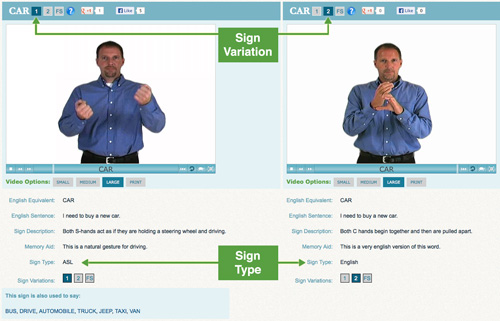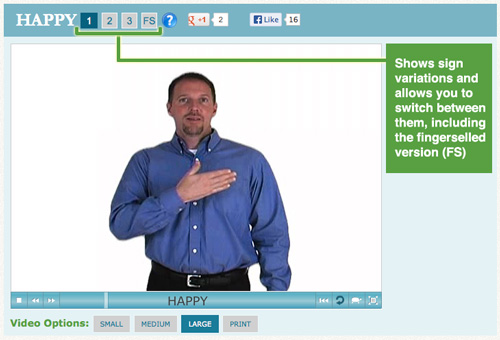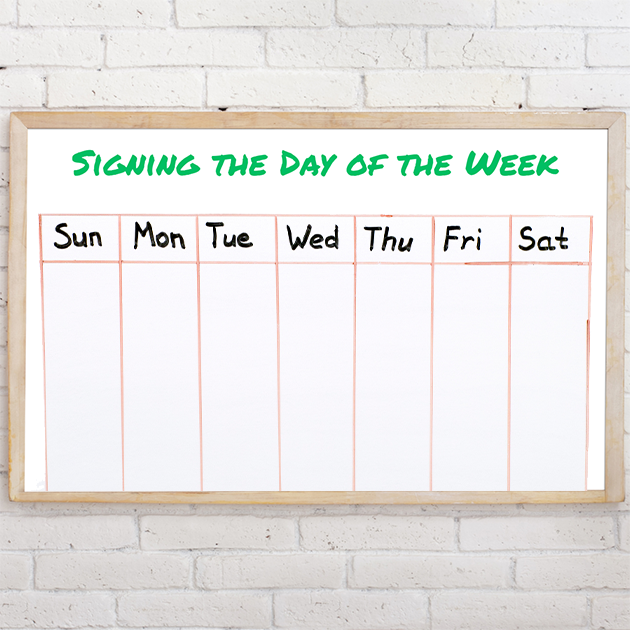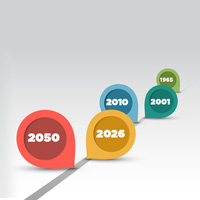The many facets of sign language
Sign language is not a universal language.
Unfortunately sign language is NOT universal throughout the world. There is American Sign Language, British Sign Language, Spanish Sign Language, Japanese Sign Language, Ausian (Australian Sign Language) and many more. In fact, there are even multiple sign languages used in the United States (American Sign Language, Signed Exact English, regional dialects, etc.). Although one universal sign language would probably make things easier, just like with spoken language, the world would have a very difficult time trying to come up with whose way of doing it was the best way!
What is the difference between American Sign Language and other sign languages?
Sign language has many different facets to it.
American Sign Language (ASL) is the language created and used by the Deaf in the United States, Canada, parts of Mexico, and some other parts of the world. ASL has a limited amount of signs, but it is the purest language from the Deaf perspective. If you are using strict ASL and interpreting English, you often fingerspell words for which there are no signs. Being its own language, ASL not only has its own vocabulary, but also its own grammar and syntax that differs from English.
Signed Exact English (SEE) and other variations (Manually Coded English, Pidgin, etc…) are also "sign languages" used by some in North America. These languages typically use ASL signs as the base but add a lot more signs to reflect a larger part of the English vocabulary. This is often done using initialization (letter handshapes as you sign) to help clarify a specific word that otherwise might just be fingerspelled or signed with a conceptual similar word in strict ASL.
One example would be the sign for CAR. The ASL sign for CAR is two A hands gesturing like they are holding onto and moving a steering wheel. In ASL, this sign is used for any automobile you control with a steering wheel, including a car, truck, bus, van, etc. The English sign for CAR is two C hands, one on top of the other, moving away from each other. If you wanted to specify what type of car, the hand shape is modified to include the initial of the type of vehicle (c for car, v for van, b for bus, j for jeep, etc.).

TIP: Signing Savvy shows multiple variations of signs and also lists the sign type (ASL, English, etc.)
This is where the term "initialized sign" comes from. You clarify the meaning by initializing the sign with the first letter of the intended English word. Therefore, using the English version allows one to specify exactly what is communicated in English. In ASL, you would use the ASL sign for car and if it was important to clarify the type of vehicle, you would follow the sign with a fingerspelling of the vehicle type (JEEP, for example). This is just one example.
Many in Deaf culture prefer to sign using strict ASL, using only pure American Sign Language signs. Some have accepted some English signs. However, many English signs are not accepted by those that practice strict ASL, and if you use them in your everyday signing, it could be frowned upon by the Deaf. It is best to watch how others are signing around you and ask if you are in doubt.
Regional signs and sign variations
There are also regional signs that you will see in different parts of North America. This is similar to the concept of regional accents in spoken languages, such as the southern drawl vs. the New York accent. Another example of regional variations in spoken languages is how in the north carbonated, sugary drinks are called "pop" and in the south, it is called "soda" or even just "coke." These same sort of regional accents and variations happen with signing, as well. Using one sign over another is not wrong... just different.
Signing Savvy signs
Signing Savvy focuses primarily on American Sign Language and signs used in the United States and Canada.
Since Signing Savvy is first and foremost a reference for folks signing or learning to sign in North America, it is important for us to also include other signs that you may encounter beyond just ASL signs. For that reason, we also include some commonly used English signs. However, we try to always list the ASL sign as the first sign variation on any given word.
We have tried to include known variations of signs, along with how to fingerspell each word. As you communicate through sign with others in your region, you will find out soon enough what is the more accepted or used sign in your area.
An example of a word with multiple sign variations is HAPPY. As you can see in the image below, Signing Savvy provides 3 sign variations for the word HAPPY, along with the fingerspelled version.

You can find many articles about sign language on the Signing Savvy website. This article is a compilation of several of our past articles:
- Misconception: There is only one sign language
- The many facets of sign language
- The difference between ASL and English Signs
ADVERTISEMENTS









Savvy User JulieSunday, August 18, 2013
I'm so glad to have found this website. Lots of signs I've been looking for for years. [...] I'm wondering why you say that it's "unfortunate" that sign language is not universal. It is no more unfortunate than the lack of a universal spoken language.